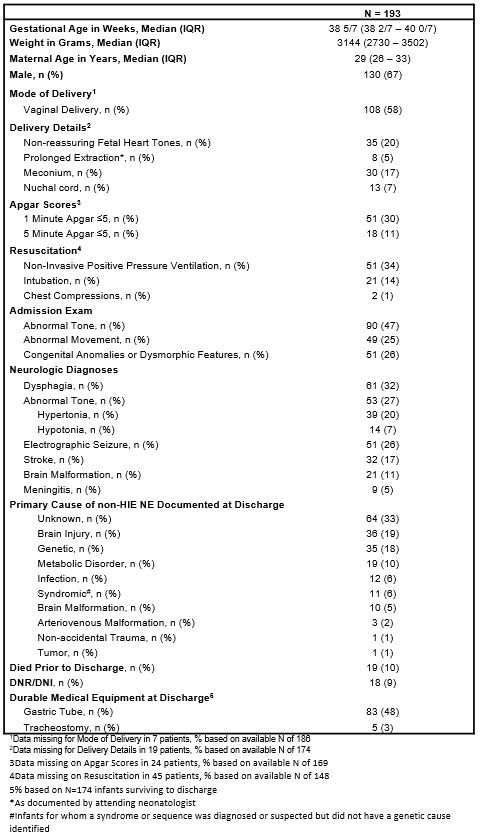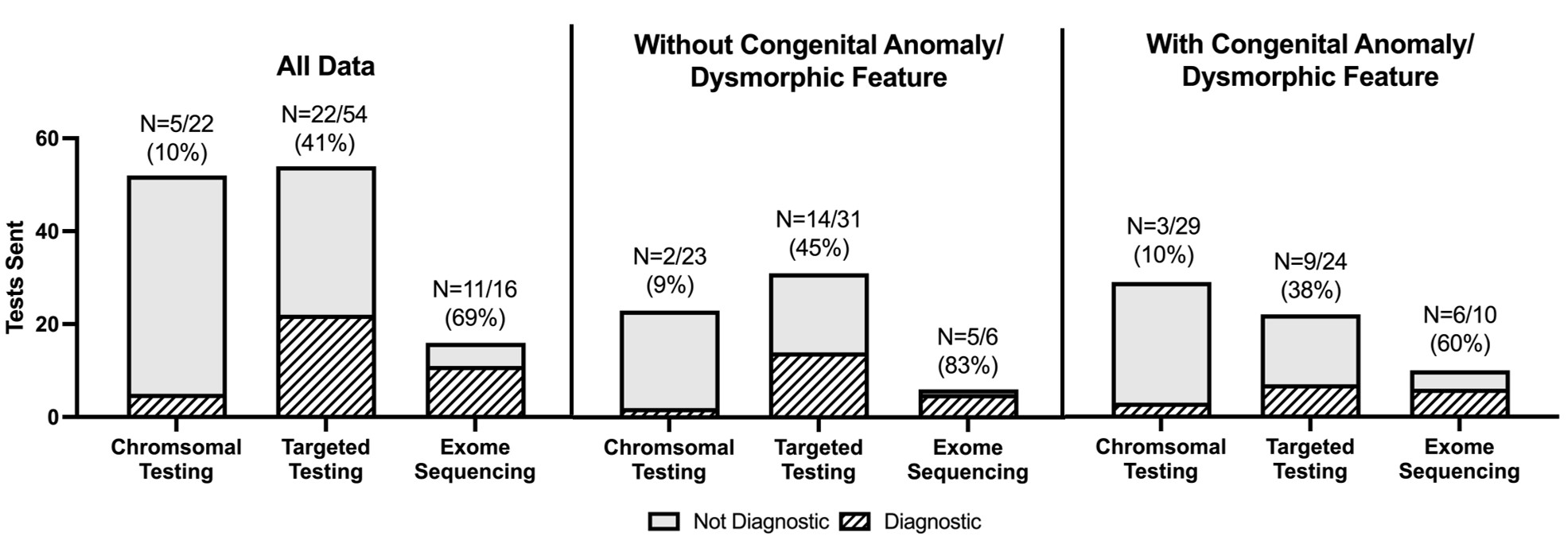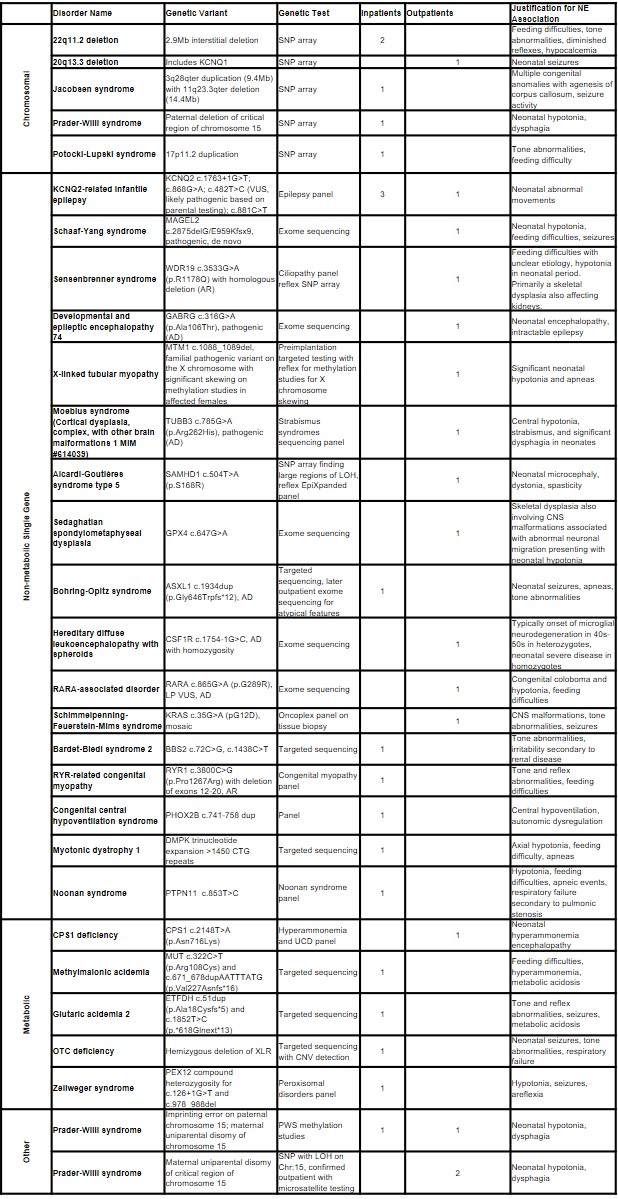Neonatal Neurology: Clinical Research
Neonatal Neurology 1: Clinical 1
159 - Characteristics, Genetic Testing, and Diagnoses of Infants with Neonatal Encephalopathy Not Due Hypoxic Ischemic Encephalopathy
Publication Number: 159.135

Tommy R. Wood, MD, PhD (he/him/his)
Research Assistant Professor
University of Washington School of Medicine
Seattle, Washington, United States
Presenting Author(s)
Background: When neonatal encephalopathy is not due to hypoxic-ischemic encephalopathy (non-HIE NE), the presentation can be subtle, and the etiology often remains elusive during the neonatal period. Prior studies suggest an elevated prevalence of genetic disorders in this population with increased risk of long-term neurodevelopmental impairment, but data regarding the specific genetic changes present is limited.
Objective:
To characterize the clinical presentation of and the genetic testing performed for infants with non-HIE NE with a primary aim of presenting the genetic abnormalities identified at our institution.
Design/Methods: This is a retrospective cohort study of neonates born ≥ 35 weeks gestational age with non-HIE NE admitted to a Level IV NICU January 2015 - December 2019. A genetic test was deemed diagnostic if consistent with the clinical presentation. Comparison of the rates of diagnostic genetic testing between infants with and without a congenital anomaly or dysmorphic feature was performed using a Fisher’s exact test.
Results: One-hundred ninety-three infants with non-HIE NE were included in this analysis (Table 1). The most common presenting symptom was abnormal tone in 47% (90/193) of infants. Ten percent (19/193) of infants died prior to discharge, and 48% of survivors (83/174) required medical equipment at discharge. Forty percent (77/193) of infants underwent genetic testing as an inpatient. Of the 52 chromosomal studies (karyotype and/or chromosomal microarray), 54 targeted tests (single gene, panel of genes, or methylation studies), and 16 exome sequences sent, 10%, 41%, and 69% resulted in a diagnosis, respectively, with no difference in diagnostic rates between infants with and without an associated congenital anomaly or dysmorphic feature (Figure 1). A total of 27 unique genetic diagnoses for non-HIE NE were identified in 35 patients who underwent both inpatient and outpatient genetic testing (Table 2).
Conclusion(s): Neonates presenting with non-HIE NE have high rates of morbidity and mortality and may benefit from early genetic testing, even in the absence of other exam findings. This study broadens our knowledge of the genetic conditions that underlie non-HIE NE which may enable families and the care team to better anticipate the needs of the individual, allow early initiation of direct targeted therapies, and finally, facilitate informed decisions about goals of care.


